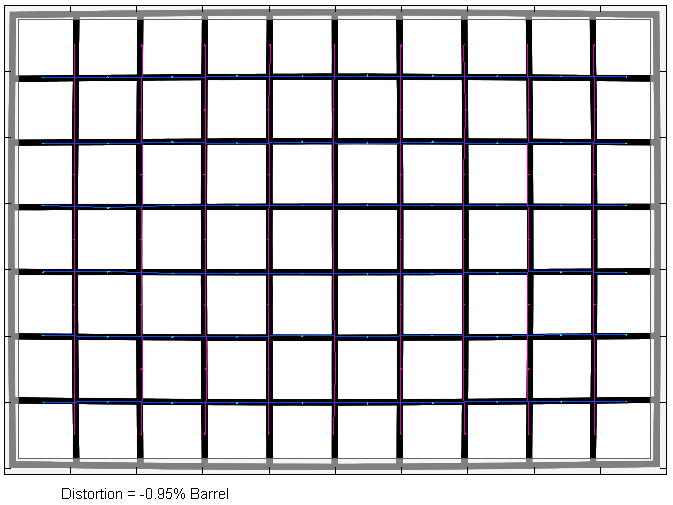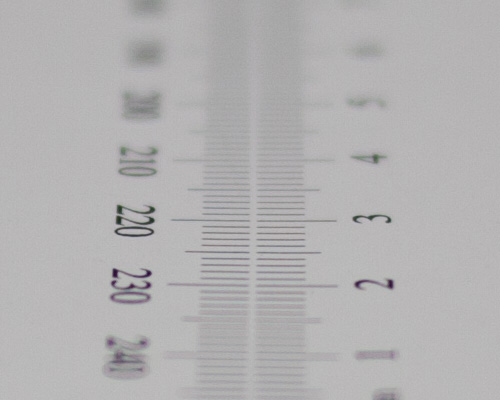|
Canon EF 35mm f/2 USM IS - Review / Test Report - Analysis |
|
Lens Reviews -
Canon EOS (Full Format)
|
|
Page 2 of 3

Distortion
The distortion characteristic of the Canon lens is very moderate with a barrel distortion of just under 1%.

Vignetting
Typical for most lenses used on full format cameras, the EF 35mm f/2 USM IS shows some light falloff at large aperture settings. A vignetting of ~2.3EV (f-stops) will be very noticeable at f/2. However, the issue is substantially reduced at f/2.8 and not really a problem anymore from f/4 onward.

MTF (resolution)
As to be expected from a prime lens, the resolution characteristic is impressive. The image center is very good at f/2 and improves to an excellent quality at f/2.8 and outstanding results between f/4 and f/5.6. The outer image field has a good to very good resolution at max. aperture but it is also affected by comparatively low local contrast. Stopping down is advisable for more snappy (higher contrast) images. Very good to excellent border results are possible between f/4 and f/5.6. Diffraction effects start to have a limiting factor from f/11 onward although this setting is still easily good enough for very high quality images.
The field curvature (flatness of the focus field) is fairly low.
Please note that the MTF results are not directly comparable across the different systems!
Below is a simplified summary of the formal findings. The chart shows line widths per picture height (LW/PH) which can be taken as a measure for sharpness.
If you want to know more about the MTF50 figures you may check out the corresponding Imatest Explanations
Chromatic Aberrations (CAs)
Lateral CAs (color shadows at the image borders) stay around an average pixel width of 0.3px at the image borders. This is negligible.

Bokeh
The EF 35mm f/2 USM IS is obviously a quite fast lens with a comparatively pronounced bokeh in certain scenes so let's have a look at the findings here.
The out-of-focus highlight rendition is pretty clean with a slight outlining effect.
 The situation changes a bit when moving towards the corners. The highlight discs deteriorate and the outlining effect gets emphasized.
The quality of the general blur in the focus transition zone is pretty good. The foreground blur is a bit busy whereas the more critical background blur is quite smooth and better than most zoom lenses for instance and also significantly improved over its predecessor. Such a good bokeh is quite unusual for a wide-angle lens featuring an aspherical element.
The situation changes a bit when moving towards the corners. The highlight discs deteriorate and the outlining effect gets emphasized.
The quality of the general blur in the focus transition zone is pretty good. The foreground blur is a bit busy whereas the more critical background blur is quite smooth and better than most zoom lenses for instance and also significantly improved over its predecessor. Such a good bokeh is quite unusual for a wide-angle lens featuring an aspherical element.

Bokeh Fringing / Longitudinal Chromatic Aberrations (LoCA)
The so-called bokeh fringing refers to colored halos in the focus transition zone. Hard contrasts can have a purple color tint in the foreground changing to greenish beyond the focus point. The EF 35mm f/2 USM IS shows a medium amount of bokeh fringing at f/2. There're still some traces left at f/2.8 but the issue is gone from f/4 onward.
When browsing through the sample crops below, you may also notice that the focus point remains constant (=no so-called residual spherical aberrations).
|
Move the mouse cursor over the f-stop marks below to observe the respective LoCAs
|
| f/2 |
f/2.8 |
f/4 |
|

|
|